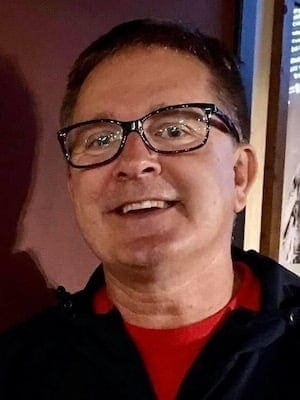Most mornings, his mom wheels into the school parking lot at 7:55 a.m.
The car is old and loud, with the potent smell of burning oil and the clanging sound of a dragging muffler.
A safety patrol officer opens the door, and he tumbles out of the car. Papers from his half-opened backpack tumble out with him.
“Slow down, buddy,” I say. “Let me get these papers for you. Is this your homework? Come on, let’s get you together and get you to class.”
I guide him toward the cafeteria, where he grabs a to-go breakfast. The bell rings and I see him heading to the office to get a tardy note so he can go into his third-grade classroom.
“How can we help Billy?” I ask his teacher at the end of the day.
I know how he is doing behaviorally. I can see it in the tiredness of his teacher’s face.
“Well,” she says, “within a minute of sitting down, he was standing up. And after raising his hand twice, he was blurting out answers, questions and stories at the speed of light. He’s a sweet kid and I love him, but it takes all of my energy, strategies and will to keep him moving in the right direction.”
I also know how he is doing academically. I can see it in the struggles he has with grades and academic measures.
I assessed his reading ability at the beginning of the school year. He is on the dividing line between being a deficient reader and an emerging reader.
Because of his reading difficulties, he has trouble reading social studies and science texts as well as word problems in math.
His attention problems plus his academic struggles equal a student who is at risk to drop out of school, a child who is at risk to give up on his dreams.
How can we help Billy—and the countless other children like him in schools across our nation?
I admit sometimes I am tempted see him as pediatrician Darshak Sanghavi was tempted to see patients in his work at Boston’s Children’s Hospital.
Writing in his book, “A Map of the Child: A Pediatrician’s Tour of the Body,” Sanghavi said, “Some days, I’d feel as though I wasn’t seeing patients, but just lungs and hearts and brains and bones and skin and guts. I couldn’t make the leap to seeing whole people. Instead, they were reduced to their constituent organs.”
“So this book is also about my quest to learn humanity,” he said.
Some days, I feel as though I’m not seeing Billy, but just a poor kid, a hyperactive student, a deficient reader and a grade: F.
I can’t make the leap to seeing the whole person. Instead, I reduce Billy to what he can’t achieve.
There are moments, though, when I remember that teaching is, to quote Sanghavi, “a quest to learn humanity”—our students’ humanity and our own.
For me, the way to learn Billy’s humanity is to see him not as a problem to be pushed to the corners of the classroom but as a person to be welcomed into my heart.
The way to learn his humanity is to slowly and surely help him understand what he can do instead of what he can’t do. This will require everything I am as a teacher and a human being.
And by learning Billy’s humanity, I will learn my own.
 Trevor Barton teaches second grade and is a member of First Baptist Church in Greenville, South Carolina.
Trevor Barton teaches second grade and is a member of First Baptist Church in Greenville, South Carolina.
A fourth grade public school teacher and member of First Baptist Church in Greenville, South Carolina.

